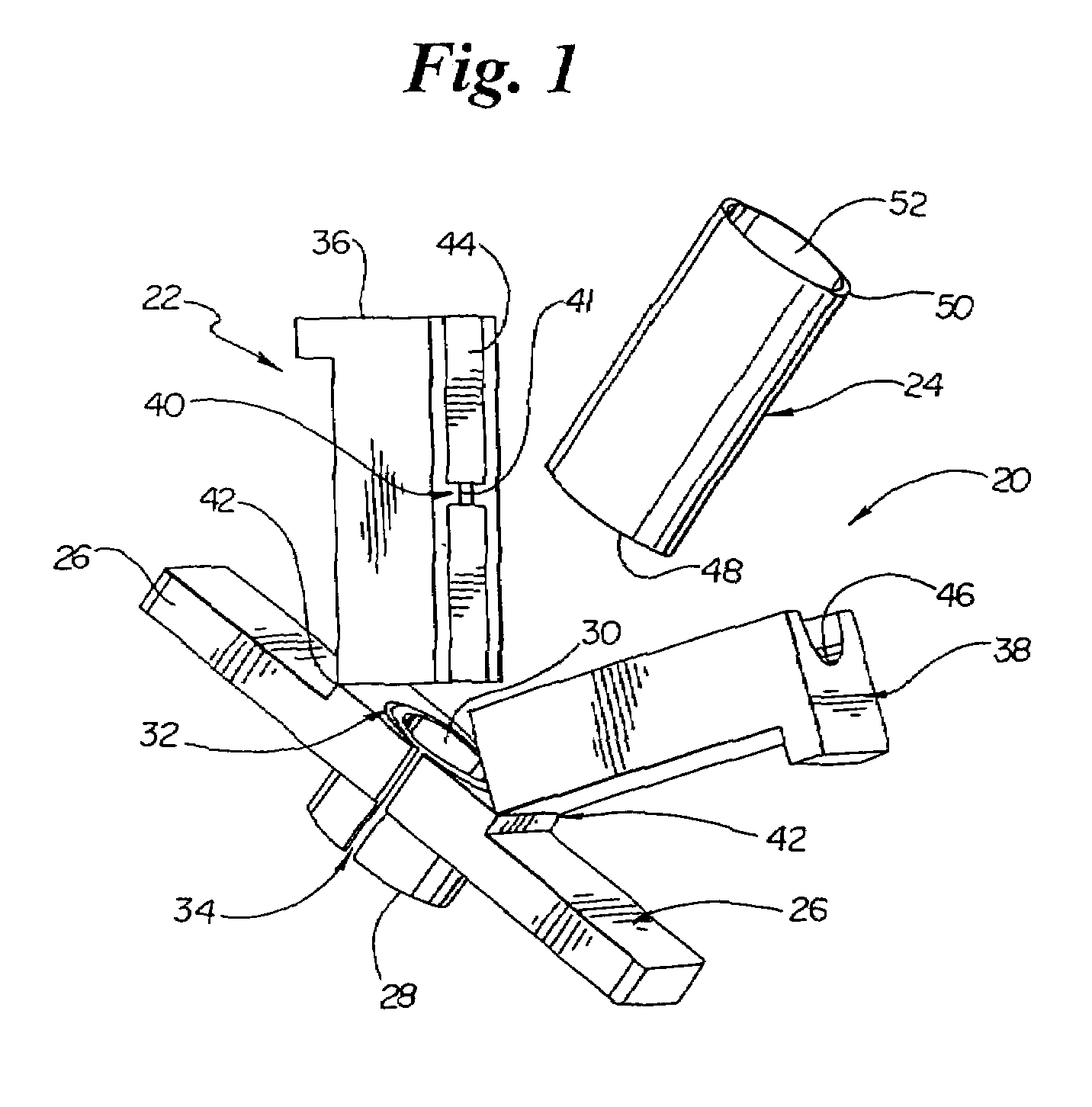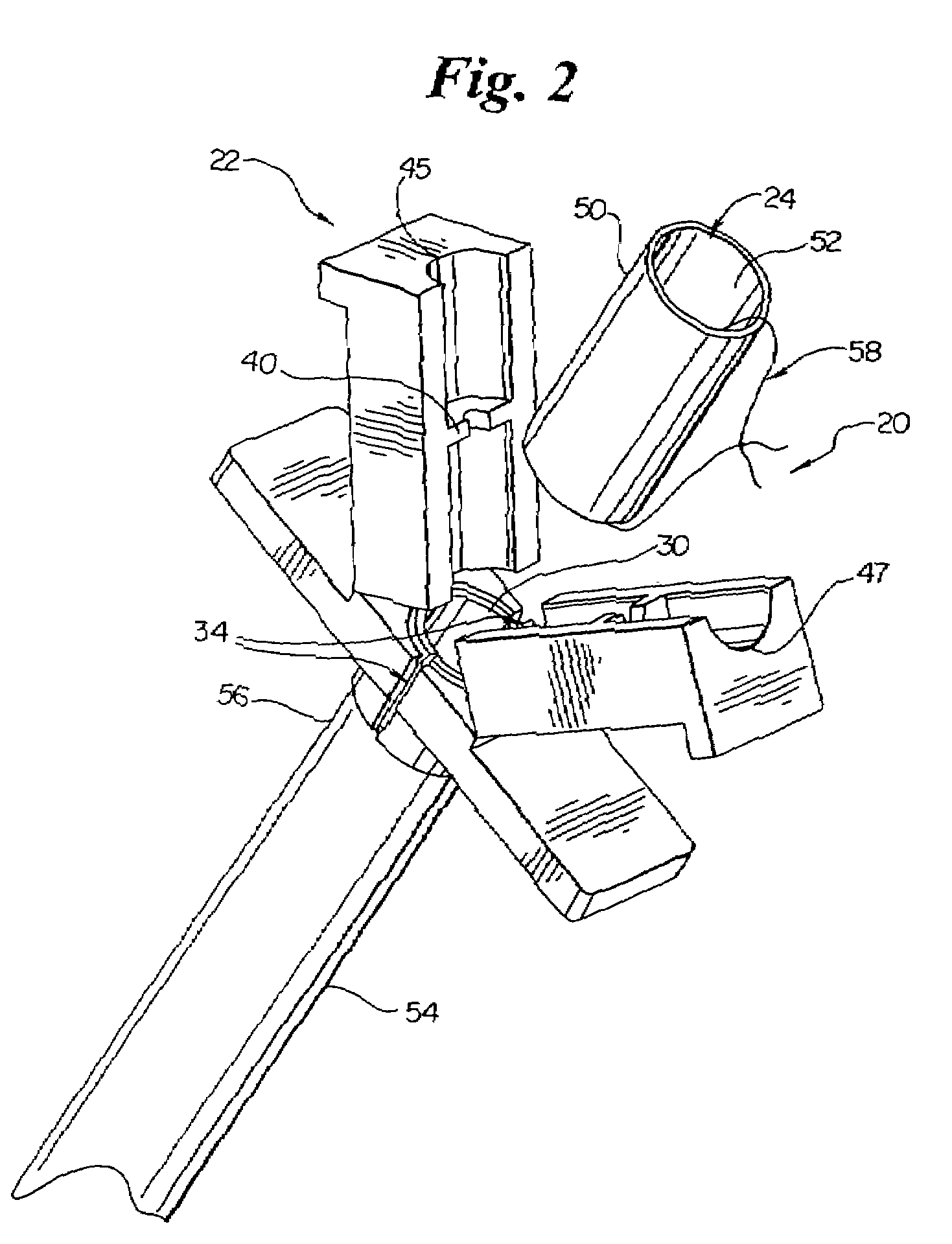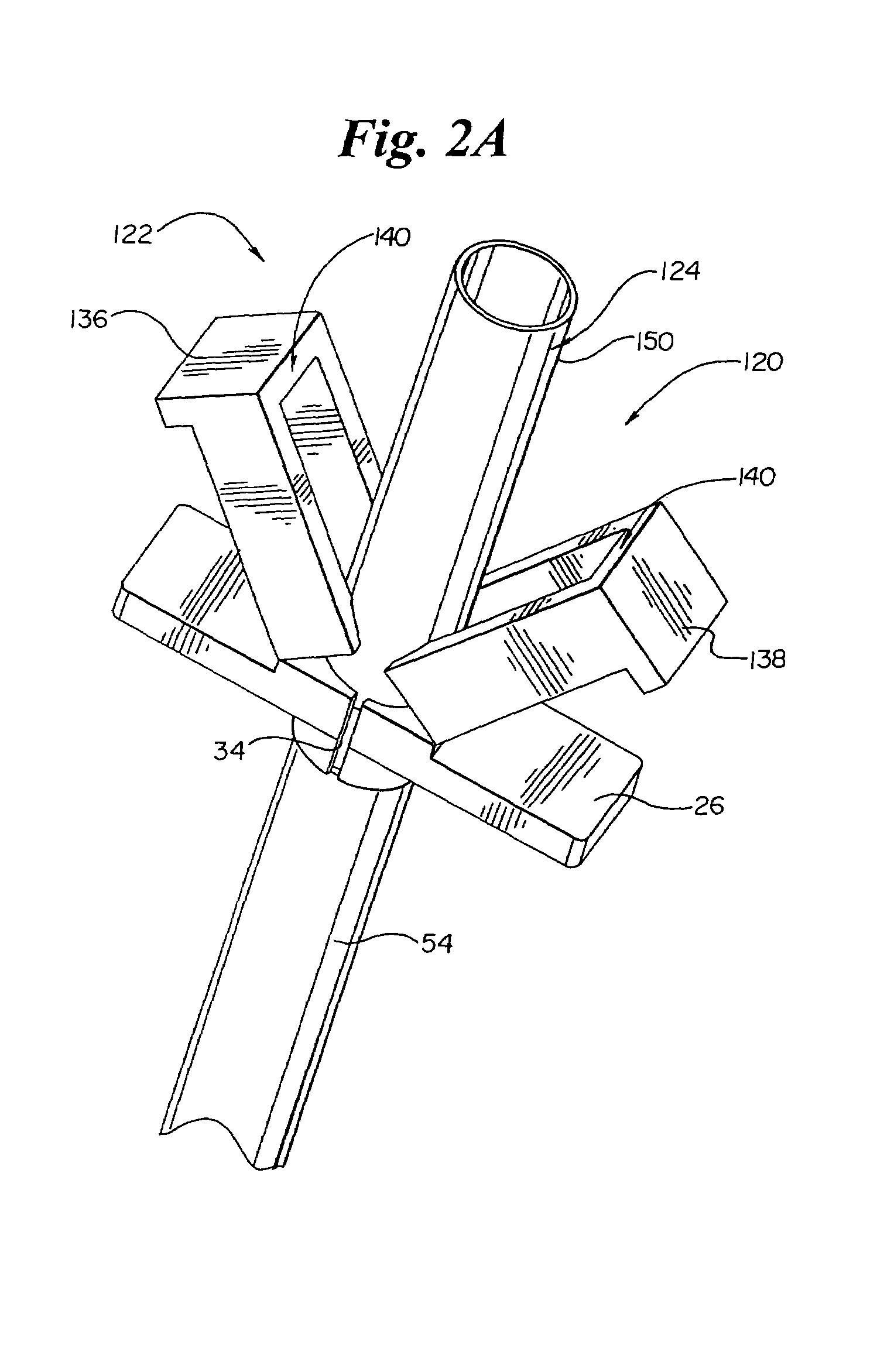Split valve for peel-away sheath
a technology of split valve and introducer sheath, which is applied in the field of medical devices, can solve the problems of backflow of blood through the introducer sheath, the placement of the catheter without an introducer sheath, and the limited use of the introducer sheath in vascular applications, so as to restrict any blood backflow and restrict blood backflow
- Summary
- Abstract
- Description
- Claims
- Application Information
AI Technical Summary
Benefits of technology
Problems solved by technology
Method used
Image
Examples
Embodiment Construction
[0021]FIG. 1 illustrates a split valve 20 including a valve body 22 and a valve sleeve 24. Valve 20 includes a distal end 28, a pair of graspable handles or ears 26, a valve sleeve seat 32, and a lumen 30 therethrough. Valve body 22 includes a first moveable member 36, a second moveable member 38, a laterally-oriented pinch member 40, and a pair of snap grooves 34 (only one being visible in FIG. 1). Valve 20 is shown in an open position, having been opened along a pair of hinges 42 lying in a plane substantially transverse to the longitudinal axis of lumen 30. A tubular valve body lumen is formed when the valve body is in a closed position, the lumen being formed by a first concave portion 44 in first body member 36 and a second concave portion 46 in second body member 38.
[0022]Valve sleeve 24 has a distal end 48, a proximal region 50, and lumen 52 therethrough. Valve sleeve 24 is adapted to be received between valve body members 36 and 38. Valve body 22 is preferably formed of a ri...
PUM
 Login to View More
Login to View More Abstract
Description
Claims
Application Information
 Login to View More
Login to View More - R&D
- Intellectual Property
- Life Sciences
- Materials
- Tech Scout
- Unparalleled Data Quality
- Higher Quality Content
- 60% Fewer Hallucinations
Browse by: Latest US Patents, China's latest patents, Technical Efficacy Thesaurus, Application Domain, Technology Topic, Popular Technical Reports.
© 2025 PatSnap. All rights reserved.Legal|Privacy policy|Modern Slavery Act Transparency Statement|Sitemap|About US| Contact US: help@patsnap.com



